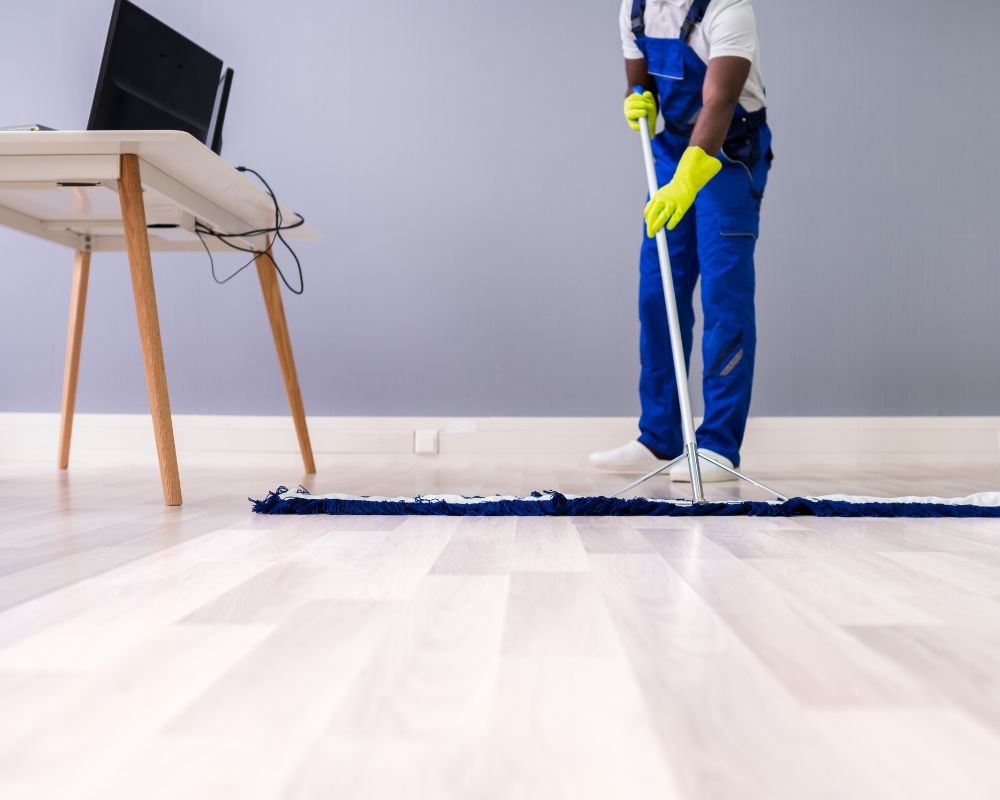Floors are designed to be tough and durable. But no floor is perfect. In commercial settings, floors need to survive a ton of punishment that can really do a number on them. For our money, the best way to protect floors over the long term is to employ some preventative strategies. As experts in industrial and office cleaning, we are happy to share some of those strategies with you.
It has been said that an ounce of prevention is worth a pound of cure. That is our philosophy toward commercial flooring. Replacing worn-out and damaged floors is expensive. Sometimes it is unavoidable. But if preventative strategies can guarantee that a floor will last years longer, it makes sense to spend the time and money on maintenance rather than investing in new floors more frequently.
1. Routine Cleaning
So many organizations don’t put the time and effort into routine floor cleaning. That’s a shame. Routine cleaning really does go a long way toward preventing long term damage. As a case in point, consider an industrial plant located in the northeast.
Management is particular about maintaining the plant floor. It gets swept and mopped nightly. In the event of incidental chemical spills, the cleaning crew gets right on them. But the same attention isn’t given to the floors in the office or reception areas. Why does this matter?
Winter weather can be as damaging to office and reception area floors as daily work is on the plant floor. Salt, ice melt, and sand are very destructive. If the office and reception area floors are not regularly cleaned throughout the winter, years can be taken off their life.
2. Floor Mat Deployment
Key areas in a typical industrial building are perfect candidates for floor mats. Right inside each entry way tops the list. A floor mat just inside the door gives visitors and employees a place to wipe their feet. Floor mats protect floors and reduce the risk of slip-and-fall accidents.
Out on the production floor, mats can protect industrial floors from harsh chemicals. They can prevent contact between abrasive substances and floor surfaces. Again, this is a way to both protect floors and improve safety.
3. Stripping and Refinishing
Industrial floors are treated with some sort of finish to protect the material underneath. But whether it is a concrete sealer or a wax-like finish over a tile floor, no finish lasts forever. That being the case, we recommend stripping and refinishing floors on a regular schedule. The frequency with which it needs to be done depends on the environment.
Traffic plays a crucial role in determining frequency. Heavily trafficked areas subject to both pedestrian and vehicle traffic are the most prone to damage. So if you’re talking a warehouse constantly alive with forklift traffic, refinishing more frequently might be necessary.
In the office, breakroom, and restrooms, stripping and refinishing isn’t needed as frequently. You are talking mostly about foot traffic, and even at that the traffic is limited. Refinishing once every year or two may be just fine. As a side note, floors need a good deep cleaning before they are refinished.
Installing new floors in a commercial environment is a costly enterprise. Between labor and materials, it is not hard to spend tens of thousands of dollars on new floors. The good news is that a properly maintained floor should last a long time. The lesson here is simple: taking care of your commercial floors pays off in the long run. You’ll spend less to maintain them than you will to replace them. That is basically it in a nutshell.



